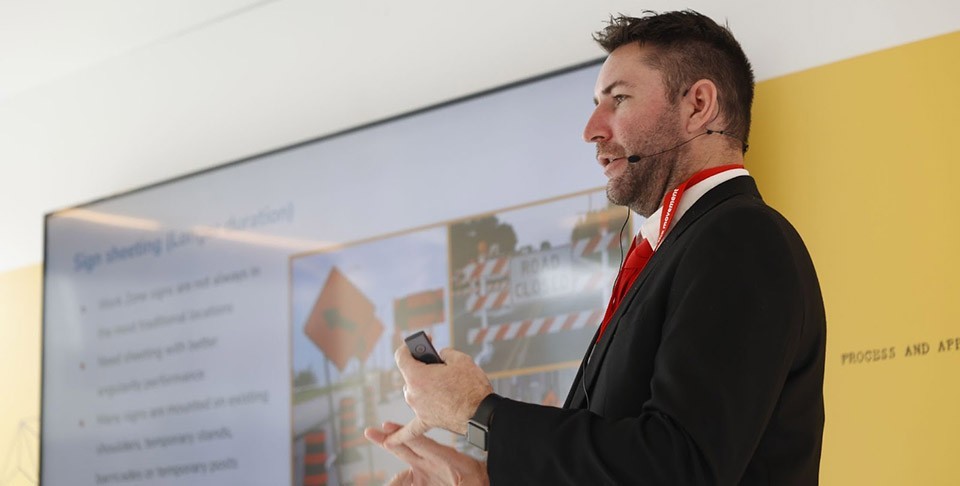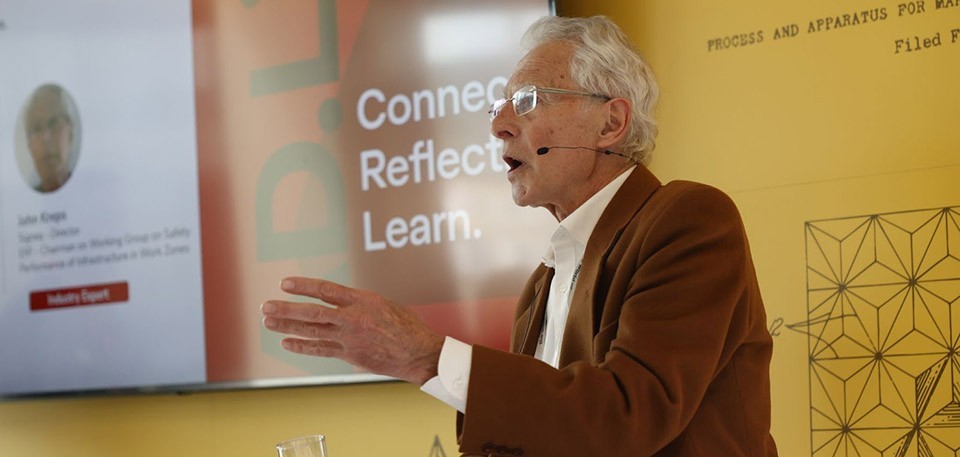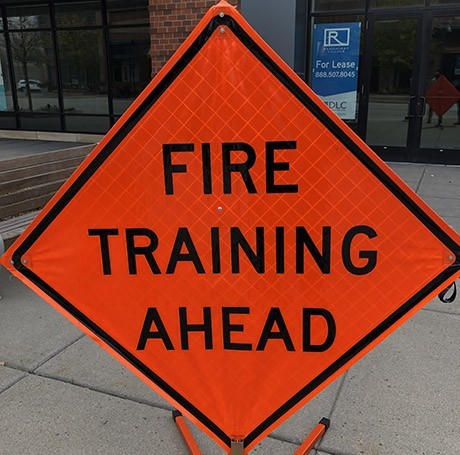“More stories are coming in every day:” How Avery Dennison and its employees are extending a hand to Ukraine
By Matthan Evans - Mar 24, 2022
"Let’s not be afraid to try something new. We can’t rely on just good enough, we can and need to be better."
Jeff Reuter, Global Product Manager - Work Zone, Avery Dennison Reflective Solutions
April 25, 2022

The advocacy for safer work zones is not a seasonal activity or something that can be done in a week, it is a relentless pursuit of being better than we were yesterday and not relying on just good enough. According to workzonesafety.org, in 2020, 857 people were killed in 774 fatal work zone crashes. As we’ve wrapped up another National Work Zone Awareness Week in the US, we realize that this is an area that has a long way to go.
At this year’s Intertraffic Amsterdam exhibition we launched a new program called AD.Live. AD.Live is a series of educational sessions based on frequently asked questions and various industry topics, in which we brought in industry experts to help talk about the topics at hand. These were short, TED Talk type sessions and ranged from vehicle safety, digital print solutions, standards and specifications, and in regards to my area, work zone safety. We were looking for new ways not only to talk about who we are and what we do, but a new way to educate and connect the industry as a whole.
I led two sessions, one titled, “Don’t rely on just good enough. Importance of an ideal work zone” and an expert panel discussion with John Kreps, a member of the European Road Federation (ERF), where we discussed key elements of work zone safety.

During my session on the ideal work zone, I addressed the main segments of a work zone: the advanced warning area, the transition area, the activity area, and the termination area. For each of the segments we covered their purpose, the types of signage, delineation devices, and other safety devices that should be utilized within each area. The main focus though was the need for each of those segments to actually be addressed in work zone design and planning. All too often one or more of these segments is ignored — typically the advance warning area. The need for transportation agencies to have a baseline manual on how work zones should be designed to account for varying situations can’t be understated.
My second session was a live interview with John Kreps (Signeq) who was representing the ERF. John is the chair of the Working Group on Work Zone Safety for the ERF. We discussed many of the issues that they continue to address in the design, implementation, and enforcement of work zone safety specs and regulations. John reinforced the importance of the work being done to improve worker safety, including the continued enforcement of work zone speed limits, the impacts of distracted drivers, and implementation of new innovation. This session reaffirmed the fact that even in areas of established work zone programs, there is still always work to be done to make things better. It also supports that in areas where there isn't a robust work zone safety program there is even more work to be done.
Although these sessions were meant to be educational in nature, they were also designed to spark discussion around what is being done today, and how we can challenge the status quo. I was pleasantly surprised by the questions, not just during the sessions, but what followed. I had opportunities to speak to attendees from multiple regions globally and get varying perspectives. Many had questions around what was commonplace in their area, and how other areas globally are addressing similar situations.

One common theme was the general design of work zones and the implementation of safety devices. You could see many of these devices around the show but how to use them is still unknown to many. One item in particular I was asked about was our roll up sign. People had heard about them, but weren’t sure how or when they should be used.
If you are digging up a road, and rebuilding it over the next five months, it's probably not the right use for it. On the other hand, if you are going out to do utility work or other quicker repairs like patching potholes or crack sealing, they might be the perfect advance warning sign for you. All too often these quicker, shorter term jobs lack proper advance warning signs because you are only on site for a few hours, or the job is progressing down the road and they just drop a few cones. It doesn’t make sense to install a post and put up a sign, but you can deploy a roll up sign and stand in a matter of a couple minutes, and provide perfect advanced warning.
There is still much more work to be done around work zone safety awareness. Whether it is through education, enforcement, design and innovation, or compliance, let’s strive to be better tomorrow than we were today. Let’s not be afraid to try something new. We can’t rely on just good enough, we can and need to be better.
By Matthan Evans - Mar 24, 2022
By Matthan Evans - Mar 01, 2022
By Matthan Evans - Feb 21, 2022